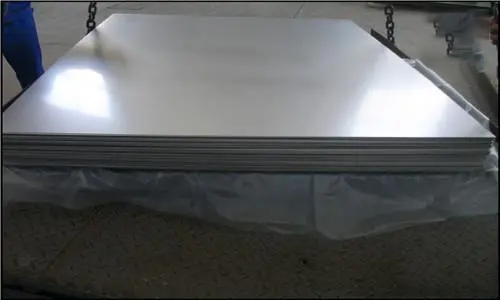17-7PH hardening (RH950) low temperature quenching + aging
17-7PH or Type 631 (UNS S17700) is a chromium-nickel aluminum precipitation hardening stainless steel used for spring applications in numerous industries.
7-7 Precipitation hardening alloys can be formed in the soft austenitic state and hardened to high strength levels by low-temperature heat treatment. The low temperature allows for minimal deformation compared to conventional quench and temper hardening processes. In the soft austenitic annealed condition, 17-7 is highly formable and is ideal for operations such as drawing, bending, and end forming. 17-7 is readily weldable in both the annealed and heat-treated conditions.
Element:
Carbon: 0.09 max
Manganese: 1.00 max
Phosphorus: 0.040 max
Sulfur: 0.030 max
Silicon: 1.00 max
Chrome: 16.00 – 18.00
Nickel: 6.50 – 7.75
Aluminum: 0.75 – 1.50
Iron: Balanced
Physical properties:
Melting point: 2550 – 2640°F (1400 – 1450°C)
Density: 0.282 lb/in3 / 7.8 g/cm3
Tensile Modulus of Elasticity (RH 950 and TH 1050): 29.6 X 10 6 psi / 204 GPA
Mechanical behavior:
Condition: annealed
Tensile Strength Minimum (psi): 130,000
Yield Strength Min. 0.2% Offset (psi): 40,000
2″ Elongation Typical: 35%
Hardness: Rockwell B85
Condition: hardened + aged (TH1050)
Typical Tensile Strength (psi): 200,000
Yield Strength Typical 2% Shift (psi): 185,000
% elongation at 2″: 9%
Hardness: Rockwell C40
Condition: hardened, low temperature quenching + aging (RH950)
Typical Tensile Strength (psi): 235,000
Yield Strength Typical 2% excursion (psi): 220,000
% elongation at 2″: 6%
Hardness: Rockwell C48
Condition: Cold Rolled/Worked + Aged (CH900)
Typical Tensile Strength (psi): 265,000
Yield Strength Typical 2% excursion (psi): 260,000
% elongation at 2″: 2%
Hardness: Rockwell C49
heat treatment:
17-7 requires three basic steps in heat treatment:
Austenitic conditioning.
Cooling transforms austenite to martensite
Precipitation hardening to TH 1050 or RH 950 conditions
Alternatively, to obtain the highest mechanical properties from the alloy, the condition A material is transformed to martensite by cold reduction to condition C in the rolling mill. Hardening to condition CH 900 is accomplished by a single low-temperature aging heat treatment.



